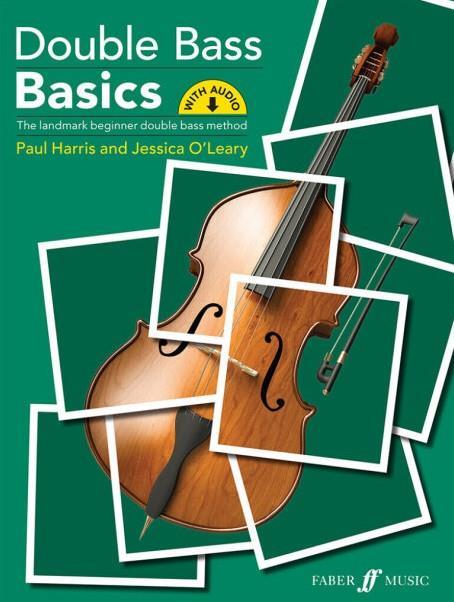Eloise Riddell reviews Paul Harris and Jessica O’Leary’s new book in their beginner string series, this time aimed at bass players

Double Bass Basics
Paul Harris, Jessica O’Leary
64PP ISBN 9780571542659
Faber Music £12.99
Double Bass Basics completes the beginner string series by Paul Harris and Jessica O’Leary. It guides young bassists from the very beginning of their playing journey to around ABRSM Grade 1 level. The book is laid out in 18 clear stages with 75 short tunes, from open strings to first position, and third-finger harmonics introduced before first position. There are both new compositions with amusing titles such as Waltz of the Loose Bow Hairs and Marching Energetically to My Bass Lesson, as well as well-known tunes including Greensleeves and The Elephant.
Backing tracks for each tune are clearly marked in the music. They are accessible by scanning the QR code on the first page of the book or from the Faber Music website. Piano accompaniments and double bass duet parts are available to download from the Faber Music website, although they are difficult to find as no direct weblink is given (it is bit.ly/3Q0W1nk). It would have been helpful to have the piano parts sold alongside the student’s book.
Each stage comes with warm-ups, top tips and activities, and I enjoyed the focus on posture, singing as you play for intonation; and finger-strength exercises, such as finger tapping. The activities encourage freedom of movement from the very beginning, including arm swinging and waving. There is great focus on creativity, with opportunities for students to compose and give their music ‘personality’, one of the ‘Four Ps’ mentioned at the beginning: posture, pulse, phonology and personality. Performance skills and the importance of practice are also clearly explained.
Book review: The Double Bass Book
Book review: Grade by Grade: Double Bass
Book review: The English Double Bass: an ‘extraordinary achievement’
The concern I have about this volume is that the authors (a violinist and clarinettist, also well respected as educators) do not understand the difference in teaching between the violin and double bass. Techniques such as double-stops and spiccato are introduced far too early alongside basic open strings and first position finger patterns. Spiccato, in particular, requires the dexterity that I would expect in a far more advanced student and certainly not at Grade 1. Equally, the left hand is firstly introduced on both the D and A strings, the latter being a thicker string and too challenging for the young student to press down in the early stages.
This book provides a good addition to the growing amount of repertoire for beginner bassists, to be used as additional repertoire, not as the sole tutor book.
ELOISE RIDDELL











































No comments yet